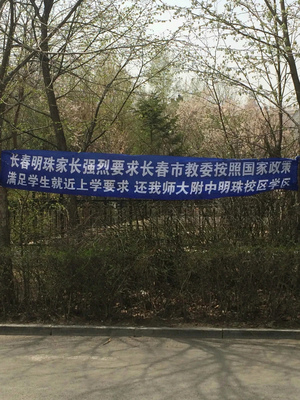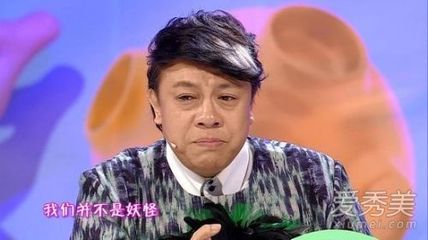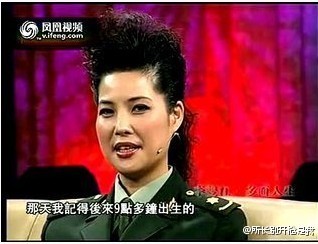【实按:学术造假是世界性的流行病。而下梁不正乃是上梁之歪的缘故。国际学术腐败的上梁不在中国而是在美欧日。最明目张胆的伪科不是数据造假而是概念忽悠。方舟子放着摆在他面前的众多洋人的学术造假不打,专打华科的假,而在华科里又是专选他和他的狐朋狗友的对手穷追猛打。这是真正的打假吗?这是正义的打假吗?这是爱国的打假吗?】
前天跟一朋友聊天,提到GSK中国研发总裁臧敬五论文造假事件。(参见《新语丝》爆料1,2, 3,4)和《自然》新闻)。
对臧敬五还较熟悉的这位朋友说臧敬五这次可是吃了大亏,要是他当年听陈竺的建议去上海交大当副校长而不是去钱更多的GSK,就不会落到今天的下场。
朋友这么一说,我倒想起来好像方舟子的新语丝多年前就盯上陈竺和臧敬五“这条线”了。难怪臧敬五论文造假的事是方舟子的新语丝最先爆料的。
让孤狗上网按下面三个词搜
臧敬五 陈竺 新语丝
结果发现:
新语丝(www.xys.org)(xys.dxiong.com)(xys.3322.org)(xys.dyndns.info...

◇◇新语丝(www.xys.org)(xys.dxiong.com)(xys.3322.org)(xys.dyndns.info)◇◇
掀起你的盖头来,走近“世界五大免疫学家之一”臧敬五作者:江湖小傻一些新闻: 劳玉
...
www.xys.org/xys/ebooks/others/science/dajia6/zangjingwu.txt- 24k - Similar pages新语丝(www.xys.org)(xys.dxiong.com)(xys.3322.org)(xys.dyndns.info...
在臧敬五教授的领衔下,中科院上海生命科学研究院健康科学中心,对类风湿性关节
....而且更加玄妙的是陈竺,一个不懂任何免疫学的人成了推荐这篇文章的人,陈竺...
www.xys.org/xys/ebooks/others/science/dajia6/zangjingwu4.txt- 15k - Similar pages“GSK中国研发总裁臧敬五论文造假事件”可能涉嫌内部斗争恶意抹黑...
2013年6月5日 ...GSK全球副总裁,中国研发中心总裁 臧敬五博士摄影/项军强. 5月31日,《新语丝》
网站爆料,GSK中心研发中心总裁臧敬五《NatureMedicine》论文...
www.bio360.net/news/show/5509.html - 61k- Similar pagesGSK公布论文造假调查结果中国研发中心总裁去职-医药行业动态 ...
4 days ago ...近日,《新语丝》网站爆料,葛兰素史克(GSK)中国研发中心总裁臧敬五2010年发表在
国际顶尖杂志《NatureMedicine》上的论文涉嫌造假,当事人已经...
www.cz2006.com/hangye/20130615/138964.html -28k - Similar pages
原来,方舟子一直在咬着陈竺和臧敬五“这条线”(参见“江湖小傻”发表在《新语丝》的《掀起你的盖头来,走近“世界五大免疫学家之一”臧敬五》和《十万个为什么,问问臧敬五》)。只不过一直没找到“过硬”的把柄。
而下面这篇文章恐怕有些真相:
“GSK中国研发总裁臧敬五论文造假事件”可能涉嫌内部斗争恶意抹黑
2013-06-05来源:生物360 作者:huashu 14944181收藏(1)GSK全球副总裁,中国研发中心总裁臧敬五博士摄影/项军强
5月31日,《新语丝》网站爆料,GSK中心研发中心总裁臧敬五《Nature Medicine》论文造假东窗事发己经离职。
根 据这篇匿名爆料文章称,臧敬五2010年发表在国际顶尖杂志《NatureMedicine》上的论文涉嫌造假,己离开该公司并正在接受调查。该文(Nature Medicine2010,16:191-197)的第一、二作者是刘学彬(Xuebin Liu)、梁绍勤(StewartLeung),通迅作者是臧敬五(Jingwu ZZhang)。据该文报道,白细胞介素7(IL7)对多发性硬化症动物模型和患者血液中TH17细胞的生存和扩增起关键作用,且阻断IL7受体能减轻实验性多发性硬化症动物模型的病理变化和临床体征。因此,IL7受体抗体己成为GSK治疗多发性硬化症的候选药物并进入临床试验,被臧敬五树为GSK中国研发中心的标杆。接到举报后,《NatureMedicine》和葛兰素史克总部经过慎重调查,在发现事实与举报一致的情况下联合派出调查组于2013年5月23日来到上海葛兰素史克中国研发中心对该文主要作者臧敬五、刘学彬、梁绍勤等人进行了单独询问、核查。
然而,除了新语丝网站这篇匿名爆料文章,还有第二消息源确认么?据 生物360网站编辑检索,目前尚无该消息的英文报道来源。而且IL-7对多发性硬化症的作用,被多个实验室重复出来,且目前多项研究都是建立在此项工作之上。这很有可能是对臧敬五的诬陷。
此外,作为一个企业有竞争的,有竞争就会有斗争。很多事情都不是看起来那么简单,在事情没有真相大白之前,谁都不能妄下结论,尤其是此类涉及到个人声誉的事情!据了解,臧敬五向来治学严谨,科研见解极深,深受学生及工作人员的敬爱,而且作为一个中国人走到今天的位置确实不易,单枪匹马为了科学追求在海外奋斗。
观察这篇爆料文章(详见下文)的写作手法,作者可能是前GSK人员,应该是与臧敬五等人有些“过节”。由此事件,笔者想到了某些人“见不得别人好”的劣根性,也希望不要借打假的名义冤枉好人。此次所谓的“造假事件”不希望为真,但愿以内部斗争失利了结。
另外,此次事件的爆出,笔者希望不要因为“一己私利”的匿名爆料而影响整个中国生物医药行业在世界的形象,更加不要影响到对中国R&D的投资。
臧敬五博士
臧敬五,神经学专家,免疫和神经退行性病变领域的科学家,目前担任GSK中国研发中心总裁,主要开展研究及新药开发和人员招聘工作。
在接受GSK任命之前,臧博士是位于上海健康科学研究所的创始人、所长和教授。该所是中国科学院上海生命科学研究院和上海交通大学医学院的联合组建的转化型医学研究机构。
臧博士曾就职与于美国德州休斯顿的Baylor医学院,担任Baylor多发性硬化症中心的研究主任,负责多发性硬化和神经免疫疾病的临床研究工作。
臧博士毕业于上海第二医科大学(现上海交通大学)临床医学专业,获得比利时布鲁塞尔大学免疫学博士学位并开始涉足多发性硬化的研究。随后,他在美国哈佛医学院完成博士后研究工作,并在Baylor医学院完成住院医生训练。臧博士获得Baylor医学院神经学教授职位,并持有美国德州和上海的行医执照。回国工作后,在中国科学院和上海交通大学任职。他在转化型转换研究领域有20多年的经验,发表过100多篇学术论文、综述及专著。
爆料原文:
GSK中心研发中心总裁藏敬五Nature Medicine论文造假东窗事发己经离职
作者:formergskemployees
据 悉, 葛兰素史克中国研发中心(GlaxoSmithKline R&DChina)负责人臧敬五2010年发表在国际顶尖杂志NatureMedicine上的论文涉嫌造假,己离开该公司并正在接受调查。该文(Nature Medicine2010,16:191-197)的第一、二作者是刘学彬(Xuebin Liu)、梁绍勤(StewartLeung),通迅作者是臧敬五。据该文报道,白细胞介素7(IL7)对多发性硬化症动物模型和患者血液中TH17细胞的生存和扩增起关键作用,且阻断IL7受体能减轻实验性多发性硬化症动物模型的病理变化和临床体征。因此,IL7受体抗体己成为GSK治疗多发性硬化症的候选药物并进入临床试验,被臧敬五树为GSK中国研发中心的标杆。
接到举报后,Nature Medicine和葛兰素史克总部经过慎重调查,在发现事实与举报一致的情况下联合派出调查组于2013年5月23日来到上海葛兰素史克中国研发中心对该文主要作者臧敬五、刘学彬、梁绍勤等人进行了单独询问、核查。臧敬五等人伪造实验结果的事实逐渐浮出水面。
1. 文中图6(Figure 6)有关的IL7和IL7受体拮抗剂对多发性硬化症患者血液中TH17细胞的生存和扩增的实验结果纯属伪造!该图中所有结果均来自于健康人而非多发性硬化症患者血样。调查组找出了图6的原始实验记录,上面明确写道实验结果来自于健康人血液样品。在事实面前,刘学彬、梁绍勤、臧敬五无法抵赖,只有承认图6中的实验数据来自健康人,而不是文中多处(摘要、实验方法、结果、讨论部分)所谓的来自于多发性硬化症患者的血样。为什么要用从健康人血样中获得的实验数据冒充是来自于多发性硬化症患者血样呢?难道是作者标记错误吗?其实这里面大有玄机。原来,由于在中国无法收集到多发性硬化症患者血样(中国是该病低发地区),臧敬五遂与美国贝勒医学院签了一份合作协议,由时任贝勒医学院助理教授的洪建负责收集多发性硬化症患者血样并完成实验。洪建用所收集到的极少数患者血样进行了实验,发现IL7拮抗剂并不能有效抑制TH17细胞。刘学彬、梁绍勤、臧敬五等人收到这一结果非常失望,于是找来健康人血样,让王春霞做实验得到了所谓的IL7拮抗剂抑制TH17的结果,然后偷梁换柱,谎称是从多发性硬化症患者血样中获得的数据。殊不知GSK对实验记录有严格的管理措施,所有原始实验都记录在电子记录本(electronic labnotebook, eLNB)里,保存至少60年,且任何更改都会留记录。因此调查组并未费多少功夫便确认其造假的事实。调查组还发现,论文投稿时间居然早于合作协议签署时间!可见合作研究尚未正式启动而其实验结果已有了,而且论文已经投稿了!GSK明文规定不允许在没有有效协议的情况下与外单位合作,故此事也触犯了GSK的Compliance 方面的规定。
2. 在该文附加图7(supplementary 7)中,作者描述了IL7促进MS患者血液中分化的TH17细胞中IL17的表达(?n?=?20?)。图中20个点代表20个患者血样。作者真的是从20例患者血样中获得的数据吗?回答是否定的。据悉,他们仅做了极少数几例,然后灌水,谎称结果来自于20例患者血样!可见附加图7中的实验结果纯属伪造!有趣的是附加图7上显示的统计学结果是p<0.001, 而在第196页"结果"部分,作者描述为 "Furthermore, invitro exposure of differentiated TH17 cells to IL-7 led tosignificantly increased production of IL-17 (n=20,P<0.01)"。同一结果,一处是p<0.001, 而另一处是p<0.01,可见作者在伪造结果时多么不小心!
3.文中其它部分的实验结果是从多发性硬化症小鼠模型中获得的。虽然结果看似完美,但无法被辉瑞公司所重复!这已是业内公开的秘密。我们不禁要问该实验的主要执行者赵永刚同志,你心里踏实吗?
4.论文是2010年发表的,到2013年被调查,这三年间臧敬五对以上造假的事实是否知情?从得知被调查之日起他的所作所为可见一斑。臧敬五于5月22日接到上级通知,让他本人和该文的主要作者刘学彬和梁绍勤以及主要人血样品实验执行者洪健和王春霞次日全天待命,接受调查组问讯。臧敬五立即与以上四人去东郊宾馆吃晚饭并商量对策。他指使他们统一口径,以掩盖事实真相,其后臧敬五多次招集刘学彬、粱绍勤等人商量如何瞒天过海。可见臧敬五不但完全知情而且参与合谋!
我不禁要问藏总,1)您在许多场合(通常是酒后)提到您这篇得意之作时自豪地说完成该文的实验您花费了1000多万元人民币。现在看来,由于关键花钱的实验是自编的,您的1000万元都花到了何处?2)在您的全力推动下,大干快上,将IL7受体抗体作为候选药物推到了临床试验阶段。您有没有自问这个基于伪造实验数据的临床试验会给GSK造成多大的经济损失、对患者的生命安全会造成多大的潜在威胁、对GSK的声誉和股票会产生多大影响吗?在这些时候您都想了些什么呢?3)您在很多场合的演讲时都强调科学研究趋动的新药开发是GSK中国研发中心的特色。当您面对无数崇拜您的听众时您有没有手心冒汗?4)您在外把自己包装成科学大师、自称世界五大免疫学家之一,在内却沆瀣一气,数据造假、灌水无所不用其极时,您想过什么是科学道德、为人师表、师道尊严吗?5)我想再去调查您2013年3月发表在Nature Medicine 的论文或者2011年发表在 Immunity上的论文或者您刚刚修回到NatureImmunology的有关Sirt1调节RORgt的故事,己经是浪费时间了,这里面有几斤干货您心知肚明!您知道您描绘的所有这些海市蜃楼会在大雾散去太阳升起之时消失吗?
藏总,很多人都替您扼腕,因为您聪明、大胆、敢想敢干!但凡事不能走极端!聪明太过就变成愚蠢,胆大就妄为!您胆子也忒大了一点,数年前您冒充世界五大免疫学家之一,被人当作饭后笑料;还是数年前您无视法规擅自上临床试验被美国FDA警告;两年前您在NOGO项目上隐藏不良数据、粉饰太平、欺上瞒下,被GSK警告并勒令整改?。老天爷给了您如此多的机会痛改前非,重新做人,您为什么不要呢?唯一合理的解释是利令智昏!为了权和利,您不择手段啊!您知道多少仁人志士,其中不乏您的旧友,为实现中国梦,远道而来,投奔到您的麾下,结果,多少人饱受您的打击报复而家破人亡、妻离子散吗?用您常常引用的话结尾吧:whatdoes not kill you makes you stronger.
这次曝光的丑闻会因时间推移而逐渐淡出人们的记忆,但愿您因此而深刻反思,重新扬起您高傲的头,成为真正的强人!
论文检索:
Xuebin Liu, Stewart Leung,Chunxia Wang, Zhu Tan, Ji Wang, Taylor B Guo, Lei Fang,YonggangZhao, Bing Wan, Xia Qin, Limin Lu, Runsheng Li, Heng Pan, MingjuanSong,Ailian Liu, Jian Hong, Hongtao Lu & Jingwu ZZhang.Crucial role of interleukin-7 in Thelper type 17 survival and expansion in autoimmunedisease. Nature Medicine, 10 January 2010; doi:10.1038/nm.2077
再看看日本记者发在《自然》的报道:China drugs head fired over article row
Researcher stands by results despite demand for retraction.
18 June 2013Jingwu Zang says he is baffled by the whole affair. Until lastmonth, he was head of a neurodegenerative-disease research unit inShanghai, China, for London-based drug firm GlaxoSmithKline (GSK).On 22May, as he tells it, his boss told him thatthere would be an investigation. The next day, Chinese lawyersshowed up at the company to interview him. On31May, he was told to hand in his computer andcompany credit card, and was escorted to his car. “Within a fewminutes, I was outside the facility I built,” he says.
On 9 June, hereceived a letter informing him of his officialtermination of employment.
The investigation has focused on a paper published in NatureMedicine that Zang co-authored on multiple sclerosis (MS), hisspeciality (X.Liuetal. Nature Med. 16, 191–197;2010). GSK is asking for the paper to be retracted; Zang standsby the results. The Chinese blogosphere is abuzz over the dispute,wondering what it signals for a centre seen as a bellwether forChina’s budding drugs industry.
Related stories
Zang set up the global research and development centre inShanghai in 2007. The centre was considered bold: of the manyinternational pharmaceutical giants that had opened researchoperations in China in the previous five years, only GSK had givenits branch wide autonomy, with control over global operations foran entire development sector, that of neurodegenerative diseases.“In Shanghai, we can make decisions that drive global studies,”says Zang.
Now with some 400 scientific staff, the centre has severalcandidate neurodegenerative drugs in phaseI andII clinical trials, Zang says, and he was eager to get one throughphaseIII, to “demonstrate that we can do greatscience and move a clinical compound forward”.
Four years ago, Zang’s group started work on a protein calledthe interleukin-7 receptor (IL-7R). “It was a really excitingstory,” he says. IL-7R sits on the surface of certain immune cells,and a genetic variant of it had been linked to MS. Nobody knew whatthe underlying mechanism was, but Zang had a hypothesis — that theIL-7 pathway played a part in the pathogenic expansion ofT-helper17 (TH17) cells, immune cellsthat, when present in excess, are thought to contribute to MS.
In 2010, the group published results in Nature Medicineconcluding that this was indeed the case. But last month, the papercame under scrutiny from within GSK after the company and NatureMedicine were notified of a problem with some of the data. AGSK investigation has since concluded that human blood samples usedto create a figure in the article — described in the caption asbeing taken from patients with MS — actually came from healthysubjects.
On 10June, GSK posted a statement saying:“Regretfully, our investigation has established that certain datain the paper were indeed misrepresented. We’ve shared ourconclusion that the paper should be retracted and are in theprocess of asking all of the authors to sign a statement to thateffect.”
“Regretfully, our investigation has established that certaindata in the paper were indeed misrepresented.”
Zang and Xuebin Liu, the paper’s first author, both say thatthis was an unintentional mistake that does not change the paper’soverall conclusion. Liu, whose group ran the experiment andcompiled the data, says that the team had hoped to use data fromcells of patients with MS and had drafted a manuscript with thatwording. But although preliminary data from patients did revealZang’s proposed link between the IL-7R pathway andTH17cells, staining in those images was inadequate — sothe team turned to healthy subject data instead, Liu says. In ahurry to beat competition, they forgot to change the caption. Liusays that cells from either group can be used to show theeffect.
Liu also addressed another problem, noted later on apharmaceutical blog, after news of the investigation came out: twoimages, with captions describing different experimental conditions,are identical. Liu says that the mistaken duplication occurredduring editing and layout of the article, and has asked NatureMedicine to check. The journal’s chief editor Juan Carlos Lópezsays that he cannot comment yet.
The main thrust of the paper — that IL-7R is related to MS, andthat blocking its function can ameliorate MS-like disease in amouse model — largely agrees with results from other groups. Butscientists have failed to replicate the specific mechanism proposedby Zang’s team.
One of those studies, led by researchers at Stanford Universityin California and at Rinat, a subsidiary of the drugs giant Pfizerbased in South San Francisco, California, found that the effects ofblocking IL-7R largely agreed with the results from Zang’s group.But they were unable to reproduce the results of Zang and Liu’sexperiments that supported a connection between IL-7R andTH17 cells as the mechanism. The discrepancy was “notlikely due to differences in the experimental protocols, because wediligently followed their methods”, the researchers wrote in their2011 report in Science Translational Medicine (L.-F. Leeetal. Sci. Transl. Med. 3,93ra68; 2011). Stanford’s Lawrence Steinman, a correspondingauthor on the California study, declined to comment.
But Liu says that the California experiment differed from theChina experiment in an important way: the GSK team used matureTH17 cells whereas the California group usedundifferentiated ones. “It’s a different protocol, a differentstage,” he says.
Liu says that as first author he takes full responsibility forthe mistakes. On 9June, he announced hisresignation on a Chinese bioscience website. Both Liu and Zang saythat they stand by the paper’s results and will not sign a letterto Nature Medicine requesting that the paper be retracted.López says that a retraction is still possible, even if not all ofthe authors agree to it, “if confidence in the paper is lost”. Insuch cases, “the paper is still retracted, explaining who agreesand who doesn’t agree to the retraction”, he says.
Asked whether a retraction is warranted if the mistakes do notaffect the paper’s findings, David Daley, GSK’s director of globalexternal communications, acknowledges in an e-mail that in theperiod since the research was carried out, “an independent body ofevidence has accumulated that the receptor [for] interleukin-7(IL-7) is a valid target for a variety of autoimmune disorders”.But he adds that “because certain data in the publication weremisrepresented, we believe retracting the paper is the onlyappropriate action to take”.
Zang, who was involved in the experimental design and indrafting the manuscript, but not in the hands-on experiments ordata compilation, believes that he was fired not over datamisrepresentation but for allegedly “influencing theinvestigation”. The letter terminating his employment states thathe “wilfully and purposefully undermined and misled thisinvestigation and provided untruthful information” — charges hevehemently denies.
Daley declined to detail GSK’s reasons for terminating Zang’semployment, but provided a GSK statement: “We are confident in thethorough investigation we conducted and the actions we have takenas a result of our findings. We will not tolerate activity andbehaviour that falls short of the high standards expected from ouremployees.”
Zang says the whole episode is bizarre. “I still can’tunderstand it.”
- Nature
- 498,
- 283–284
- (20 June 2013)
- doi:10.1038/498283a
把这些事鲁在一起,大家看明白了吗?
要不要我再绕议一下?
 爱华网
爱华网



